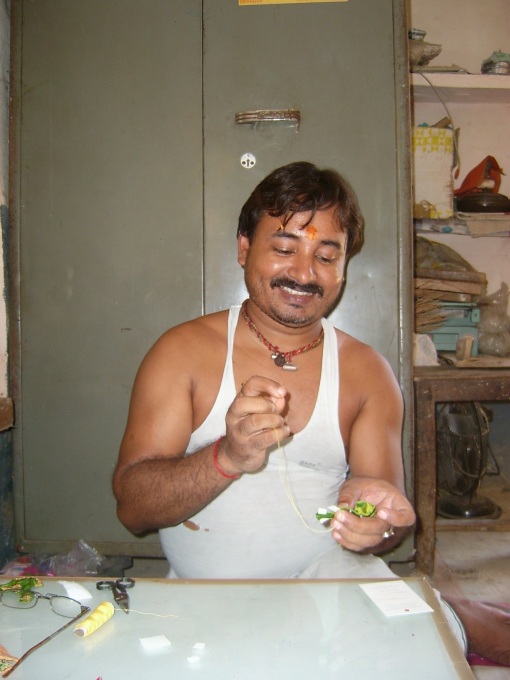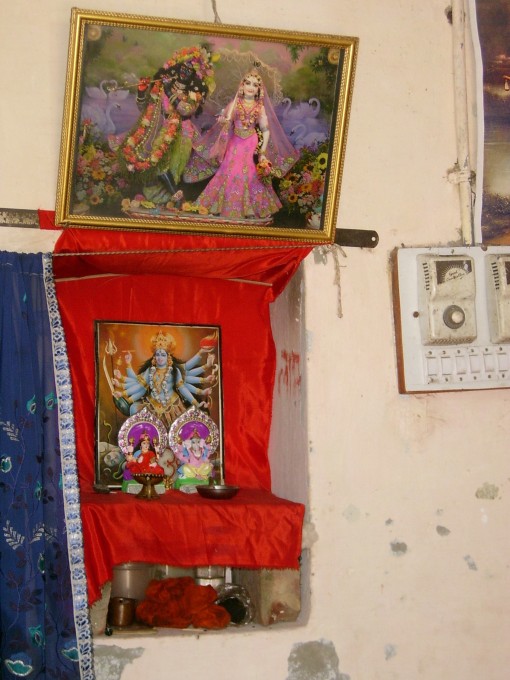
The warm smile of Lord Jagannatha
On Wednesday 19th I caught a 28 hour train from Tirupati to Puri where I came face to face with some phantoms that surfaced without warning, as they do.
About 10 hours from Puri I noticed my contact lens case had disappeared from beside my head where I was asleep on an upper berth. The possibility of this happening had been one of my greatest fears for this journey. They had fallen to the berth below and someone took them. Both lens in their case, gone. For those of you who don’t know I’m as blind as a bat and have worn lens for 30 years. I also stupidly have no glasses. I am about -8 in both eyes which means the world disappears to a more impressionistic blur than Monet ever contemplated.
After about 5 minutes of desperate, futile, searching with concerned passengers I finally crawled back to my berth for the remaining 10 hour train journey beset with panic, utter disbelief and incapacity to imagine what to do. How could God do this to me ????????
To avert further panicked thoughts and over-whelming fears, I somehow shut down all further contemplation of my situation and channelled my frantic mental energy into devouring the Ramyana, by RK Narayan which I had picked up in Mamallapuram. Losing myself in the trials of Rama and Sita helped me appreciate that I was not the only one to be faced with a difficult struggle; and the heroism of all the characters, Jatayu, Hanuman, Tara, Lakshman, Sita and Rama also helped put things somehow in perspective. Temporarily at least.
Having finished that book I had an interesting experience. One that halted my rampaging elephant mind from doing further damage with its terrifying images of the impossibility of survival. It was an experience born perhaps of shock – although I prefer to think a touch of Divine kindness.
I felt myself withdrawing deep within to a calm place with only me and a sense of a Divine other – which most people call God, but I’m trying to be sophisticated. Maybe it’s all the temples, all the blessings I have received from priests and sadhus, or just that atmosphere of possibility that prevades India, but there I was going all spiritual on a train, and happy for it.
Although its difficult to describe my calm place, it had a strong sense of self separate from the external reality……as if the whole world turned inside out and I felt more ‘real’ and protected and peaceful than before.
It felt clear too if I stayed in this ‘reality’ all would be well. Everything else would follow and I would take everything one step at a time and think of nothing else. It was a very interesting transition and somehow it froze everything into a ‘now’ and a sense of myself totally separate from my circumstance. Simply going through some motions.
However as we arrived in Puri on the 20th about 4 pm, fear rose again and mypeaceful cocoon dissolved as a different reality awaited on the over-crowded platform. I got out of the train forcing myself to think only of three things:
1) Find the exit….follow the crowd.
2) Look for the colour yellow. It’ll be a rickshaw
2) Say the name of a Hotel.
On the platform a swarm of faceless rickshaw wallas engulfed me, blocking my way and I did not know which direction to take. Panic started to rise again and being the gentle type I am not, fear turned to anger, and I am ashamed to say the first words I uttered in the Holy Dhama of Puri were: #*&!!@&%$##!!!
As soon as I heard myself , I saw the unnecessary excess of my response, and apologised to Lord Jagannath, but at least it energised me. Having got directions for the exit I marched towards a yellow thing, grateful for daylight and the brightness of colour it afforded, and got myself to a Hotel for the night.
That done…it just became a matter of shaving my whole reality down to acceptance of my situation and outlining the steps needed to deal with it.
I slept well that night, intrigued with my circumstance and my responses to it and no longer fearful of the situation. I felt I had been put into my ‘nightmare’ to find the presence of the Divine in a place that by its very nature, bans that presence.
It felt like a chance to face my fears, and depend on Krishna. Not that there was a whole lot else I could do since the whole world of perception had become porridge, but in terms of attitude it made an incredible difference.
Next morning I managed to take a bus to Bhubaneshwara, get a rickshaw to an Optician…and three hours later had a pair of high-optic glasses that brought the external world back again. Three hours can you believe it ? Only in India!
So in under 24 hours I learned that nightmares are often the phantasmagoria of an athletic mind and that the reality of ‘forms and shapes and colours’ is not the only picture.
A few further little embellishments to the whole experience was the fact that as soon as I entered the optician even I could see the smiling face of a huge Lord Jagannath on top of a T.V. – and he seemed to be smiling at me. An encouraging welcome and reassurance that all would be well.
Then in the rickshaw I caught immediately after being told they could have them ready in three hours, there was a whole panel of Jaganatha, Baladeva and Subhadra smiling at me from the front panel of the auto-rickshaw.
And finally, as an encouraging reminder of the Queen of blindness herself, Gandhari in the Mahabharata, the Hotel I ended up in was Hotel Gandhara. ( Of course, technically the linguistic relationship here is in doubt, but I’m blind to that, taking encouragment where I can).
By the end of the day, it mattered nothing to me that I would not be allowed in to the Jagannatha temple the next day to see the deity – being a white-face. I felt I had already been caught up in his broad smile and that his huge staring eyes understood short-sightedness in all its forms.


































